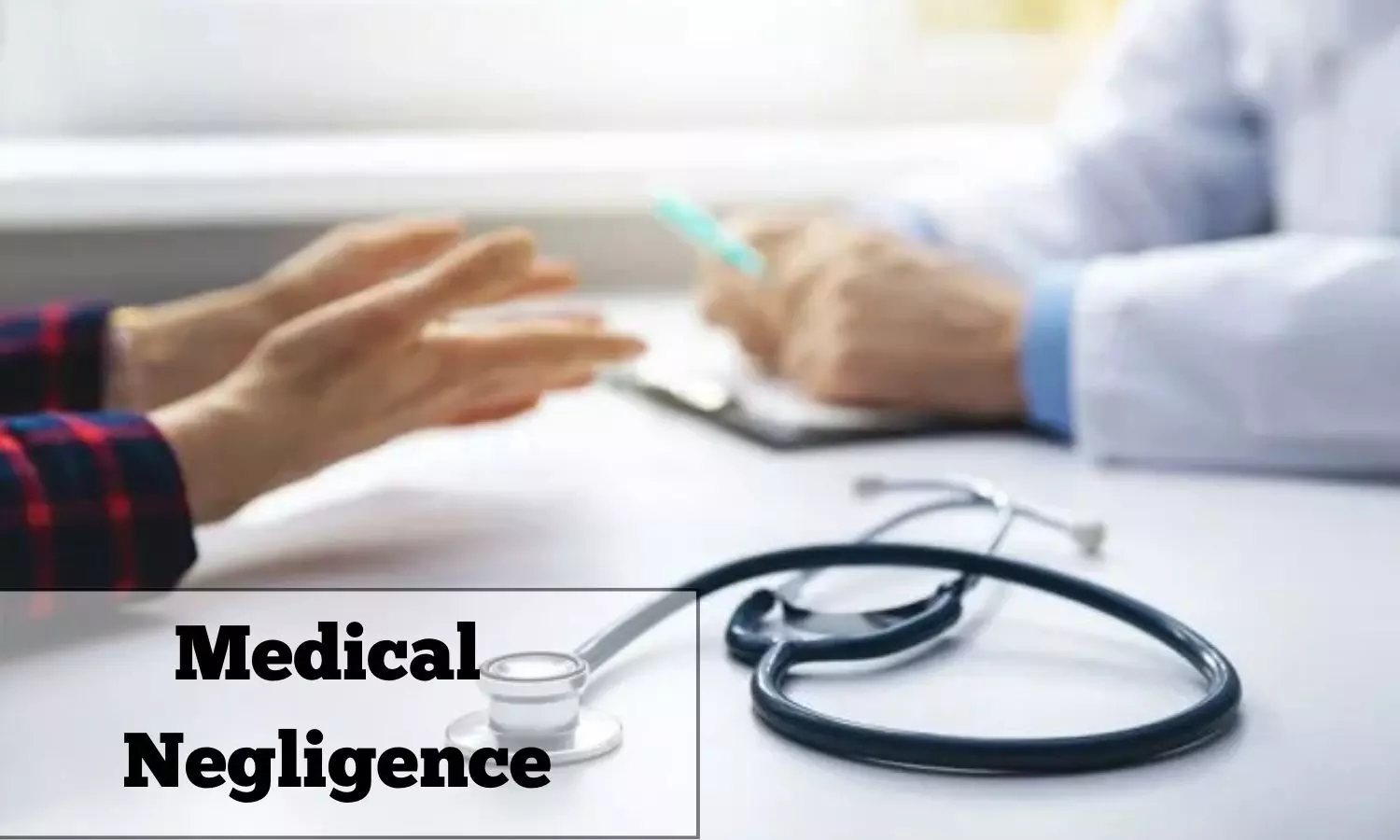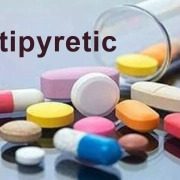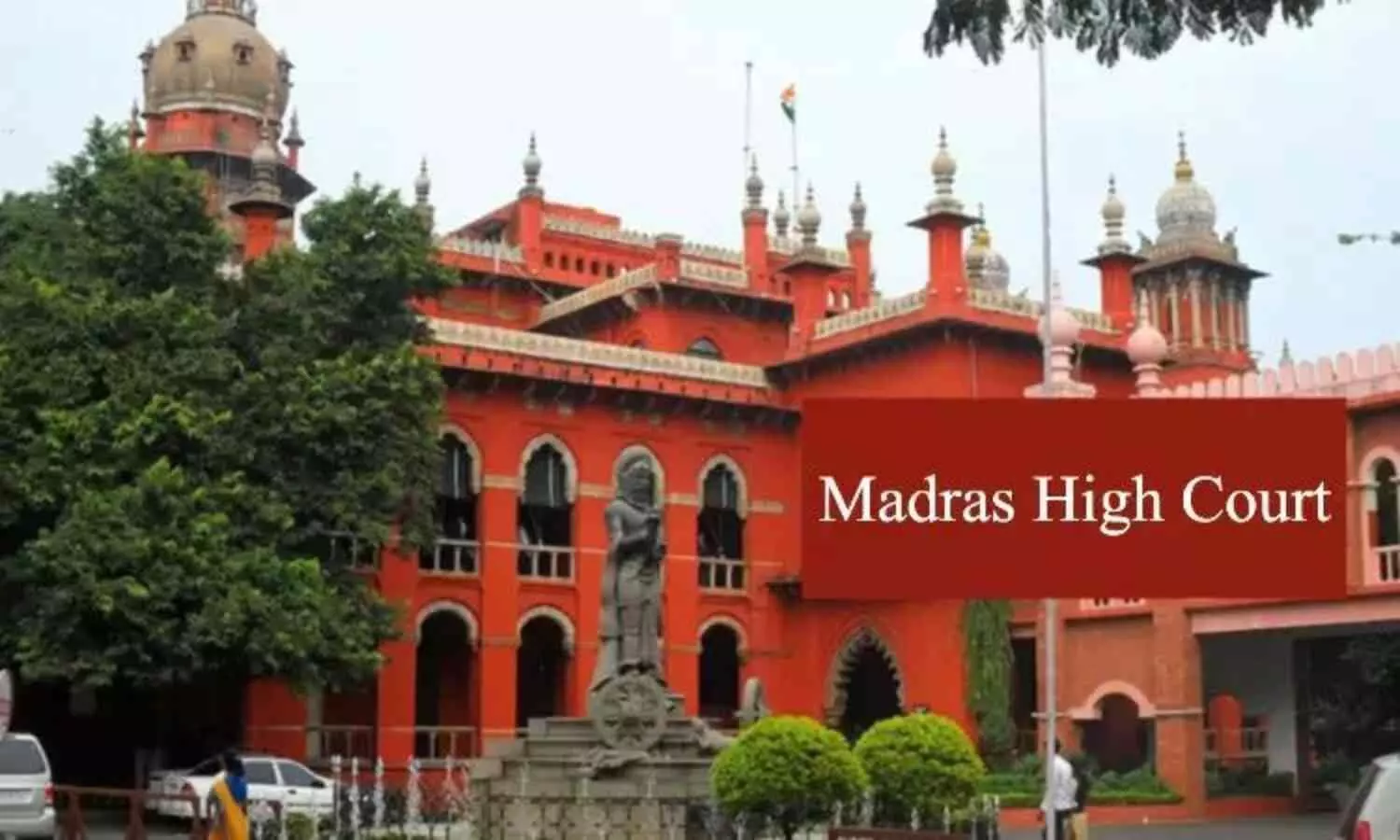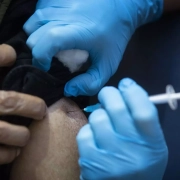
New Delhi: The National Consumer Disputes Redressal Commission (NCDRC) recently upheld the order of the State Commission which had held a Patiala-based hospital and its surgeon liable for negligence and deficiency in service while performing laparoscopic cholecystectomy.
During the surgery, the patient suffered a cut injury to the portal vein, requiring the conversion of laparoscopic surgery to an open procedure. However, the condition of the patient worsened leading to her death.
While considering the plea by the doctor and hospital, the Apex Consumer Court upheld the order of the State Commission directing the doctor and hospital to pay Rs 40 lakh as compensation to the husband and the children of the deceased.
The matter goes back to 2014 when the main complainant’s wife approached Janak Surgicare Hospital where after examining the patient, the treating doctor Dr. Arora diagnosed her with Ch. Cholecystitis and Cholelithiasis. The doctor recommended laparoscopic Chole/Open Chole and certain biochemistry tests and abdominal ultrasound.
An ultrasound of her abdomen revealed 5 mm multiple stones in the gallbladder. Later, the patient was admitted to the treating hospital in Patiala and a laparoscopic cholecystectomy was scheduled. The procedure was performed by the treating hospital’s Dr Arora with assistance from Dr. Kapoor. It was alleged that during the surgery, she suffered a cut injury to the portal vein, requiring the conversion of laparoscopic surgery to an open procedure. Portal vein injury resulted in leakage of blood into her abdominal cavity, leading to severe deterioration in her condition.
However, due to lack of facilities, she was taken in an ambulance to PGI Chandigarh for vascular repair, accompanied by two OT assistants. In transit, her condition worsened, prompting a decision to admit her to Fortis Hospital, Mohali where a vascular surgeon performed surgery to rectify the portal vein injury. Allegedly, due to a delay in vascular repair and significant blood loss, the patient died.
Additionally, the treating hospital and the doctor allegedly erroneously communicated that no vascular surgeon was accessible in Patiala. Contrary to this, they contended that such facilities were available at a hospital in Patiala. The complainants alleged that the hospital and the doctor were negligent in not referring the patient to the Patiala-based hospital or engaging a doctor from the said hospital.
Further, they alleged that the negligence by the treating doctor and hospital during the surgery resulted in the occurrence of the portal vein injury, which was allegedly acknowledged by the treating facility before the Medical Board. Therefore, filing a consumer complaint, the complainants demanded Rs 50 lakh as compensation and other reliefs.
Responding to this, the doctor and the hospital objected to the complaint stating that the complaint is not maintainable. They contended that there was no negligence in the treatment. Emphasizing the qualifications and competence of their staff, they asserted possessing the necessary skill and experience, and that the duties were performed diligently with the assistance of competent medical staff. According to them, the patient was treated with the utmost care, caution, skill, devotion, and dedication, maintaining that the procedure adopted was in the best interest of the patient.
Previously while considering the matter, the State Commission had directed the hospital and doctor to pay Rs 40 lakh as compensation in lumpsum for the loss of mother, her love, affection, future care, mental agony, harassment etc. to the minor children of the patient and for the mental agony and harassment to the husband of the deceased.
“The opposite parties are directed to comply with this order within a period of two months from the date of receipt of certified copy thereof jointly and severally. The opposite parties are further directed to deposit Rs.15,00,000/- (Rupees fifteen lakh only), each, in the shape of FDRs in a nationalized Bank, in favour of the minor complainants i.e. complainant Nos.2 and 3, which may earn maximum interest and complainants Nos.2 and 3 shall be entitled to withdraw the amount of interest accrued on the said FDRs, from time to time, for their daily pursuits, through their guardian. They shall be entitled to withdraw the entire outstanding amounts of the FDRs, when they will attain the age of 21 years. The rest of the amount of Rs.10,00,000/- shall be paid to complainant No.1 within the above said period of two months,” the State Commission had ordered.
Being aggrieved by the order, the hospital and the doctor approached the NCDRC. They submitted that the portal vein injury is a known albeit rare occurrence during laparoscopic cholecystectomy. They further submitted that it happened during the open part of the procedure and not during the laparoscopic.
The said injury is a common event at the hands of the most experienced surgeons in the field. Just because an unexpected injury during an operation does not make the surgeon automatically negligent, they submitted. Further, they argued that after the injury they took due medical care to the extent that they could by clamping the vein and achieving haemastasis.
Apart from this, the doctor and the hospital further submitted that there was no delay in referring the patient to PGI Chandigarh and nothing was concealed while referring her. They argued that the fact that the complainants went against the referral of the appellant to PGI Chandigarh shows that a false case had been made up against the appellant.
Examination of the death summary of Fortis Hospital reveals that death was due to failure to repair the portal vein at Fortis Hospital. Thus, making them party to the case amounts to non-impleadment of parties which is fatal to the case. The death summary also shows the history of cardiac arrests at Janak Surgicare which never occurred, they further submitted.
While considering the matter, the top consumer court noted that as per records, to remove the gallbladder, the surgeon frees it from the liver by clipping and cutting the cystic duct and the cystic artery, the main blood supply to the gallbladder. Clipping and cutting of the common bile duct is not part of the procedure and, if not repaired, it will result in serious harm to the patient.
The Apex Consumer Court observed that it is undisputed that the treating surgeon who performed both laparoscopy and open cholecystectomy and the other staff of the hospital assisted him, within the scope and course of their employment.
“Thus, liability, vicariously applies to OP-1. It is the contention of the Complainants that by causing such injury, OPs who owed a duty to conduct a proper and safe surgical procedure with reasonable professional competence and care, failed in that duty and, thereafter failed to take effective and timely steps to control the loss of blood. As a consequence, a person who went to OP-1 hospital to undergo a routine operation such as the present case ended up with losing life the very next day,” observed the NCDRC bench.
The Complainants asserted that while the patient was to undergo a laparoscopic or “laser operation”, he was surprised to know that it was unsuccessful and was converted to open surgery. During the surgery, the patient’s portal vein was cut and started bleeding; the doctor and hospital failed to control the internal bleeding, which resulted in her death within 16 hours.
They argued that the injury to the portal vein was caused negligently and it could have been averted if the hospital and other assisting staff applied proper care, diligence, and skill of a reasonable surgeon.
Taking note of these contentions, the NCDRC bench noted,
“An injury caused and not recognized by the surgeon is regarded as negligence. In the present case, initially it was the duty of the Complainant to prove that the said injury to the deceased was due to negligence in giving her treatment by OPs and that there was a failure on the part of OP doctors and/or other staff to adhere to ordinary level of skill and diligence possessed and exercised by them. While medical professionals are not expected to be of highest possible degree of professional skills always, but they are bound to ensure reasonable skill and care. The maxim ‘res ipsa loquitur’ is used to describe the proof of facts which are sufficient to support an inference that the OPs were negligent and to establish a prima facie case against them. It is not a presumption of law, but a permissible inference, which may be drawn, if upon all the facts, it appears to be justified. It is invoked in the circumstances, when the known facts relating to negligence consists of the occurrence itself or where the occurrence may be of such nature as to warrant an inference of negligence. The maxim alters neither the incidence of onus nor the rules of pleading.”
The Apex consumer court noted that it is undisputed that the said injury was sustained during her admission and the course of surgery at the hospital, she died consequently within a day.
“The Complainant has been able to discharge the onus of proving on a balance of probabilities, the negligence averred against the OPs. The deceased was of 38 years of age with two children of 15 years and 8 years, at the time of her death,” noted the Consumer Court.
Therefore, upholding the order passed by the State Commission, the NCDRC bench noted,
“It is established that the death of *** who sought medical attention at OP-1 Hospital on 11.06.2014 was operated upon for laparoscopic cholecystectomy on 13.06.2014 and the procedure was performed by OP-2, with assistance from OP-3- Dr. *** Kapoor. During the surgery, she suffered a cut injury to the portal vein resulting in leakage of blood into her abdominal cavity, leading to severe deterioration in her condition. She was rushed to PGI, Chandigarh for vascular repair. In transit, her condition worsened, prompting a decision to admit her to Fortis Hospital, Mohali where a vascular surgeon performed surgery to rectify the portal vein injury. Due to delay in vascular repair and significant blood loss she died on 14.06.2014. Had the surgery cholecystectomy been performed with due care and professional diligence, her portal vein would not have sustained the cut injury. Therefore, the medical negligence on the part of OP-2 and OP-1 hospital staff is substantially established. Further, the learned State Commission duly considered all necessary facts and circumstances of the case as well as the precedents for determining the compensation to be awarded to the Complainants.”
To view the order, click on the link below:
https://medicaldialogues.in/pdf_upload/janak-surgicare-hospital-234809.pdf
Also Read: Homeopath Poses as Gynaecologist, prescribes allopathic medicines: Consumer Court Slaps Rs 30 Lakh Compensation for medical negligence










